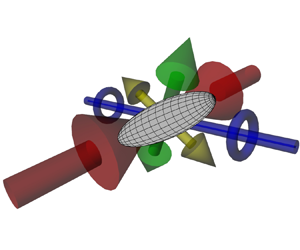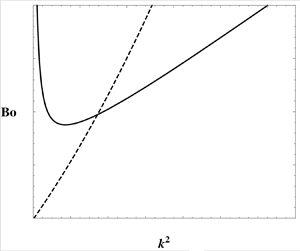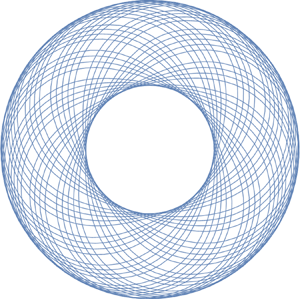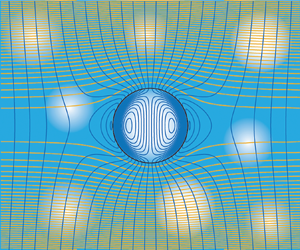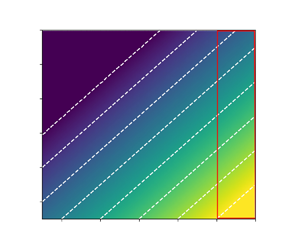Most cited
This page lists all time most cited articles for this title. Please use the publication date filters on the left if you would like to restrict this list to recently published content, for example to articles published in the last three years. The number of times each article was cited is displayed to the right of its title and can be clicked to access a list of all titles this article has been cited by.
- Cited by 7
Interferometric detection of hydrodynamic bubble–bubble interactions
-
- Published online by Cambridge University Press:
- 17 May 2022, R1
-
- Article
- Export citation
- Cited by 7
Lateral migration and bouncing of a deformable bubble rising near a vertical wall. Part 1. Moderately inertial regimes
-
- Published online by Cambridge University Press:
- 24 October 2024, A8
-
- Article
-
- You have access
- Open access
- HTML
- Export citation
- Cited by 7
Numerical simulation of an idealised Richtmyer–Meshkov instability shock tube experiment
-
- Published online by Cambridge University Press:
- 30 May 2023, A21
-
- Article
-
- You have access
- Open access
- HTML
- Export citation
- Cited by 7
Shape- and scale-dependent coupling between spheroids and velocity gradients in turbulence
-
- Published online by Cambridge University Press:
- 13 July 2021, R6
-
- Article
-
- You have access
- Open access
- HTML
- Export citation
- Cited by 7
Branching behaviour of the Rayleigh–Taylor instability in linear viscoelastic fluids
-
- Published online by Cambridge University Press:
- 17 March 2021, A63
-
- Article
- Export citation
- Cited by 7
Parameterization of turbulence modulation by finite-size solid particles in forced homogeneous isotropic turbulence
-
- Published online by Cambridge University Press:
- 12 May 2023, A6
-
- Article
-
- You have access
- HTML
- Export citation
- Cited by 7
A multi-horizon peridynamics for coupled fluid flow and heat transfer
-
- Published online by Cambridge University Press:
- 14 May 2025, A66
-
- Article
-
- You have access
- Open access
- HTML
- Export citation
- Cited by 7
Noether currents for Eulerian variational principles in non-barotropic magnetohydrodynamics and topological conservations laws
-
- Published online by Cambridge University Press:
- 02 December 2020, A4
-
- Article
-
- You have access
- Open access
- HTML
- Export citation
- Cited by 7
Unravelling the Rayleigh–Taylor instability by stabilization
-
- Published online by Cambridge University Press:
- 12 September 2013, R3
-
- Article
-
- You have access
- Open access
- Export citation
- Cited by 7
Ionic conductivity and hydrodynamic permeability of inhomogeneous (cavity doped) polyelectrolyte hydrogels
-
- Published online by Cambridge University Press:
- 11 February 2022, A27
-
- Article
-
- You have access
- Open access
- HTML
- Export citation
- Cited by 7
Creeping flow in two-dimensional networks
-
- Published online by Cambridge University Press:
- 20 April 2006, pp. 468-469
-
- Article
- Export citation
- Cited by 7
On the origin of quadrupole sound from a two-dimensional aerofoil trailing edge
-
- Published online by Cambridge University Press:
- 27 February 2023, A3
-
- Article
-
- You have access
- Open access
- HTML
- Export citation
- Cited by 7
A two-phase pure slurry model for planetary cores: one-dimensional solutions and implications for Earth's F-layer
-
- Published online by Cambridge University Press:
- 24 November 2023, A5
-
- Article
-
- You have access
- Open access
- HTML
- Export citation
- Cited by 7
Dumbbell micro-robot driven by flow oscillations
-
- Published online by Cambridge University Press:
- 07 February 2013, R8
-
- Article
- Export citation
- Cited by 7
Computational fluid dynamics model of rhythmic motion of charged droplets between parallel electrodes
-
- Published online by Cambridge University Press:
- 06 June 2017, pp. 31-53
-
- Article
- Export citation
- Cited by 7
Stratified inclined duct: direct numerical simulations
-
- Published online by Cambridge University Press:
- 15 August 2023, A20
-
- Article
- Export citation
- Cited by 7
On the effect of a central vortex on a stretched magnetic flux tube
-
- Published online by Cambridge University Press:
- 25 May 1997, pp. 121-142
-
- Article
- Export citation
- Cited by 7
Stability of stratified downslope flows with an overlying stagnant isolating layer
-
- Published online by Cambridge University Press:
- 25 November 2016, pp. 392-411
-
- Article
- Export citation
- Cited by 7
Propagation of the rim under a liquid-curtain breakup
-
- Published online by Cambridge University Press:
- 14 July 2022, A12
-
- Article
- Export citation
- Cited by 7
Nonlinear global instability in buoyancy-driven boundary-layer flows
-
- Published online by Cambridge University Press:
- 05 October 2006, pp. 377-388
-
- Article
- Export citation





















